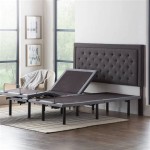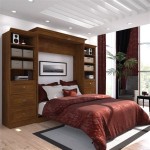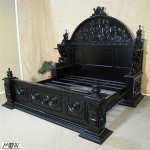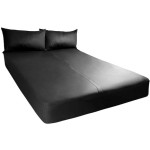Queen Over Full Bunk Bed Plans: A Comprehensive Guide
A queen over full bunk bed offers a space-saving and stylish solution for accommodating multiple sleepers in a single room. Whether you're designing a guest room, a children's bedroom, or a multi-functional living space, this type of bunk bed provides versatile sleeping arrangements while maximizing floor space. This article will provide a comprehensive guide to queen over full bunk bed plans, covering key considerations, design options, and practical tips for successful construction.
Understanding Queen Over Full Bunk Bed Dimensions
Before embarking on your bunk bed project, it's essential to have a clear understanding of the dimensions involved. A standard queen-sized mattress is 60 inches wide and 80 inches long. A full-sized mattress is 54 inches wide and 75 inches long. These dimensions dictate the overall size of the bunk bed frame and the necessary clearance for comfortable sleeping and safe climbing.
Consider the following factors when planning your queen over full bunk bed:
- Headroom: Ensure adequate headroom for the top bunk, taking into account the thickness of the mattress and the height of the individual using the top bunk.
- Staircase or Ladder: Determine the type of access to the top bunk, whether a staircase or a ladder, and factor in the space required for stability and ease of use.
- Guardrails: Include sturdy guardrails on all sides of the top bunk for safety and peace of mind, especially for younger children.
- Under-bed Storage: Consider incorporating storage solutions under the lower bunk to maximize space efficiency.
Design Options for Queen Over Full Bunk Beds
The design of your queen over full bunk bed can range from simple and functional to elaborate and customized. Here are some popular design options:
Traditional Bunk Bed
The traditional bunk bed design is a classic choice, featuring a vertical arrangement of the queen and full beds with a ladder for accessing the top bunk. This design is straightforward to build and accommodates a range of room sizes. It's a versatile option suitable for both children and adults.
L-Shaped Bunk Bed
An L-shaped design creates a unique and space-saving configuration. The queen mattress is placed horizontally, with the full mattress positioned perpendicularly, forming an L-shape. This design allows for more floor space in the room and is ideal for maximizing corner areas.
Loft Bunk Bed
A loft bunk bed raises the queen mattress to a substantial height, creating a spacious area below for other furniture or activities. This design is perfect for maximizing space and can be customized with built-in storage solutions or a desk area underneath.
Platform Bunk Bed
A platform bunk bed features a solid base with a platform-style frame for both the queen and full beds. This design offers stability and provides a sleek and modern aesthetic. It's a great choice for minimalist bedrooms or those seeking a contemporary feel.
Building Your Queen Over Full Bunk Bed
Once you've selected a design, gathering the necessary materials and tools is crucial for a successful construction project. Here are some key steps to consider:
Materials
Choose sturdy and durable materials for the frame, such as hardwood or engineered lumber. Consider using strong brackets and connectors to ensure structural integrity. Select a high-quality mattress for both the queen and full beds that provides comfort and support.
Tools
Gather the necessary tools for construction, including a saw, drill, measuring tape, level, screwdriver, and safety glasses. You may also require specialized tools for specific tasks, such as a router for creating decorative edges.
Construction
Follow detailed plans and instructions for your chosen design. Start with a solid base and frame, ensuring all components are cut accurately and assembled securely. Use strong connectors and fasteners to create a robust and long-lasting structure.
Safety
Pay close attention to safety throughout the construction process. Use appropriate safety gear, such as gloves and eye protection, and ensure all connections are stable and secure. Regularly inspect the finished bunk bed for any loose components or structural issues.
Additional Considerations
In addition to the design and construction aspects, there are other important considerations when building a queen over full bunk bed:
Weight Capacity
Ensure the bunk bed frame is designed to support the weight of the mattresses and occupants. Consult building codes and recommendations for weight capacity requirements.
Stability
The stability of the bunk bed is paramount, especially for safety reasons. Use sturdy materials and ensure all joints and connections are secure. Consider reinforcing the frame with additional supports if necessary.
Aesthetics
While functionality is essential, aesthetics also play a role in a successful bunk bed. Choose a design that complements the room's décor and adds a touch of style to the space. Consider adding decorative elements like molding or paint to enhance the aesthetic appeal.
Creating a queen over full bunk bed requires careful planning and execution. By following these guidelines, you can build a sturdy, stylish, and space-saving bunk bed that meets your specific requirements and enhances the functionality of your space.

Modular Bunk Bed Setup Woodworking Blog S Plans How To Diy Loft

17 Easy Steps For A Diy Built In Bunk Bed Start At Home Decor

Woodworking Bunk Bed Plans Full Over Queen Free Beds Loft

Diy Queen Over Loft Bed Plan Step By Guide For

17 Easy Steps For A Diy Built In Bunk Bed Start At Home Decor

Diy Built In Bunk Beds Lauren Koster Creative
68 Amazing Diy Bunk Bed Plans

Simple Bunk Bed Plans Twin Over Full Ana White

Diy Plans For Bunk Bed With Queen And Twin Xl Make A Singapore

Queen Builtin Bunks Reveal Honey Built Home







